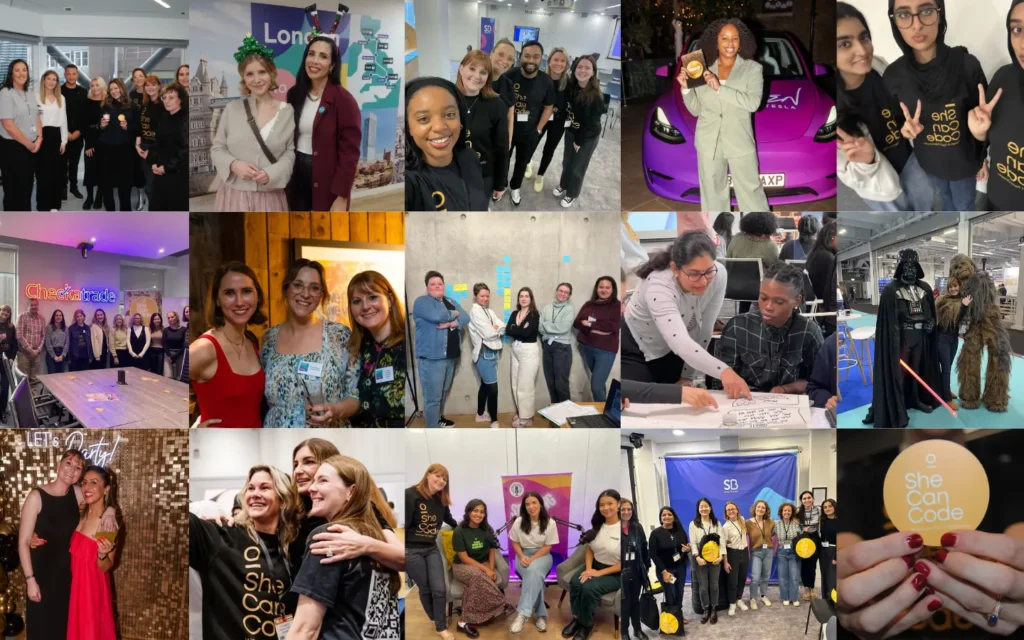Closing the gender disparity in the STEM industry has been an ongoing challenge and the above statistic unveils the core problem: if we don’t have women in schools, senior roles or in the industry they need more of a voice in, how do we expect to break this cycle?

In this article, Georgina Harris, Dean of the Faculty of STEM takes a look at how we close the gender gap in the STEM industry and the impact education can have on this.
THE SAD TRUTH ABOUT THE GENDER DISPARITY
In schools, boys are traditionally more likely to choose STEM subjects and to move on to studying STEM degrees at university. In fact, according to recent UCAS data provided by HESA, only 35% of STEM students in higher education in the UK are women. Adding to this, there remains to be stereotypes in this sector: many people still associate science and maths fields with “male” and humanities and arts fields with “female”.
This implicit bias remains to have a dire impact towards individuals’ attitudes, especially for women who often undermine what they are capable of achieving. In PWC’s Women in Tech report, they identified some of the main reasons why girls don’t pick STEM topics from their GCSEs onwards. The top reasons point to girls achieving better grades in humanities or other essay-based subjects, girls not finding STEM as interesting as other subjects or not as relevant to the career they plan to choose, and teachers not making STEM subjects appealing.
It seems that in comparison to boys, girls can’t envisage a career in STEM roles for themselves. Once this is combined with the fact that the STEM industry is heavily male-dominated a big problem is created. The lack of role models in the industry makes it harder for girls to picture themselves in the STEM sector. But if they want to defeat this stereotype and push forward into a career in STEM, they are likely to experience inflexible, exclusionary cultures that do not attract nor support women’s careers.
WHY CHANGING THE NARRATIVE AT SCHOOL IS VITAL
The education system in the UK is facing its own challenges. From tightening budgets to a drop in teachers, finding suitably talented specialist school educators is becoming more and more difficult – especially in mathematics and the sciences. How to identify a tech company committed to gender diversity can be crucial for addressing these issues, as diverse and inclusive tech environments can play a role in fostering educational advancements and opportunities.
There is an underlying theme in STEM that resonates with students: creativity is vital. Thinking outside the box and testing the norms to create something new or discover a solution to a longstanding problem are all elements needed in a career in STEM. But the pressures schools are facing has meant that many schools have had to minimise the practical, experimental and manufacturing activities that would previously have encouraged students to consider and discover the magic in STEM subjects.
So, of course, it is clear that the STEM industry needs more government support; this would involve schools getting better funding to allow students to have the chance to step away from the desk and experience the many wonders of a STEM career in practice. This would expose those who are wary of entering the field – especially young girls – to the various roles and careers the STEM industry offers.
But as schools have been finding it problematic to engage girls in the STEM industry, and will continue to find it difficult as the teaching industry struggles to find teachers, the higher education sector needs to step in. While there are more and more women studying STEM subjects at university, very few of them end up working in STEM-related careers.
Finding industry partners to support and nurture potential STEM recruits will give them the experience and constructive feedback that they need so that they too feel welcome and needed if they progress into a STEM related career.
An essential component of the successful Arden University model is the use of authentic assessments and engagement with companies in the development of our programmes and assessments. In my experience, students gain so much from tackling a challenge that, as yet, has no solution. For an engineer or scientist, the process of ‘solving a puzzle’ is not only exciting but is also the true nature behind the demands of the industry. Therefore, if universities partner with industry specialists to expose students to the highs and lows of STEM careers, it may well rise the confidence of women entering a career in the industry.
For example, ongoing projects like High Speed 2 (HS2) will take years to deliver and can present young people high profile and potentially stable employment in engineering and construction for many years to come. By involving them at university level, these projects are great ways to encourage learners to engage with STEM. as it allows new entrants to the industry to be mentored through apprenticeships in parallel with their academic studies.
If we can retain those who seek interest in particular subjects, such as mathematics, and expose them to the wonders of a STEM-related career while at university, we will find more women in the industry. The more women we have in the sector will allow for the structural changes that need to happen for the STEM industry to be more inclusive, allowing women to progress to more senior roles. Before that though, the onus is on the education system to ensure they are doing their best to ensure women and girls know all of the amazing things that happen within the STEM industry and how they, too, can be a part of it.








